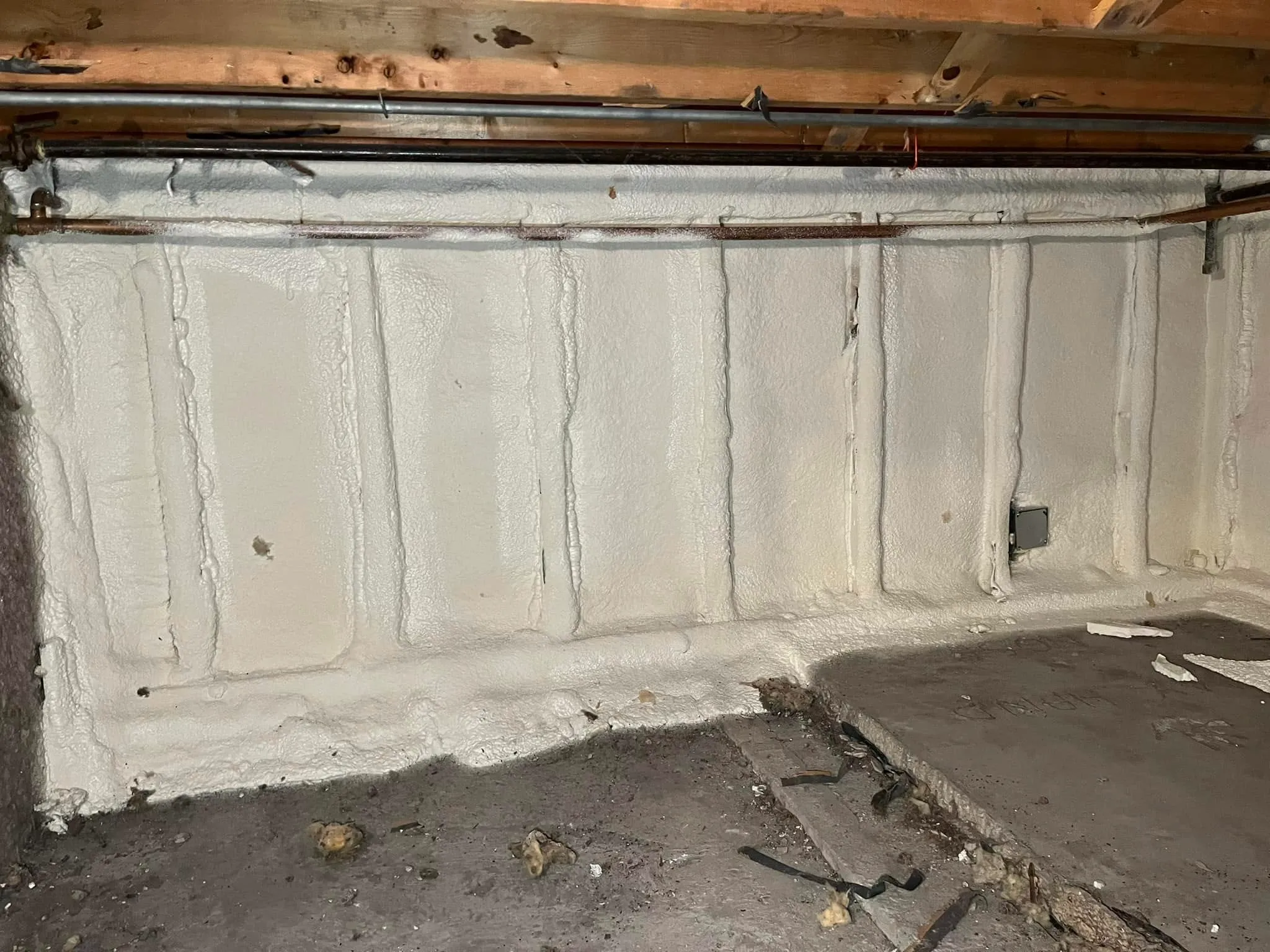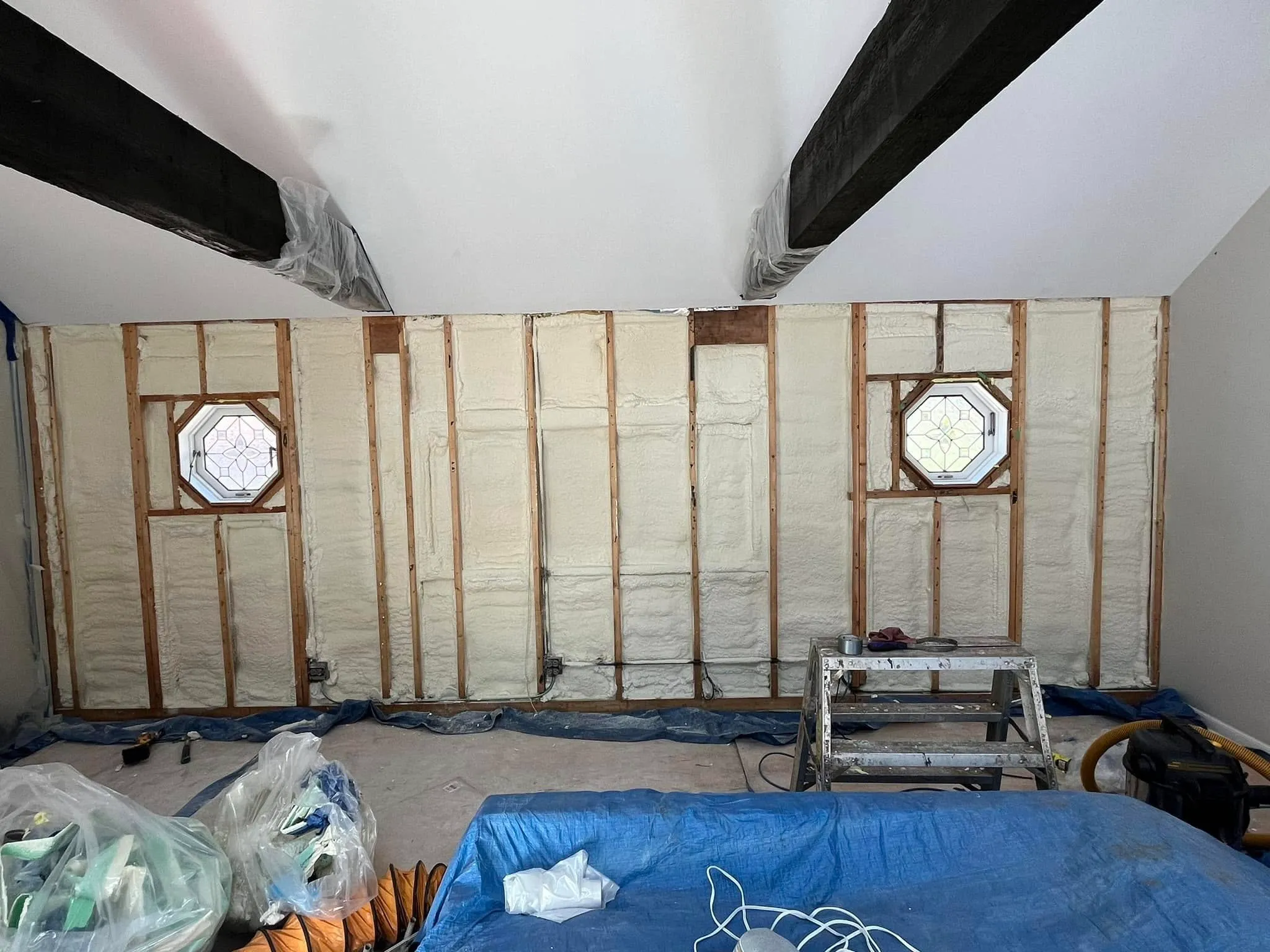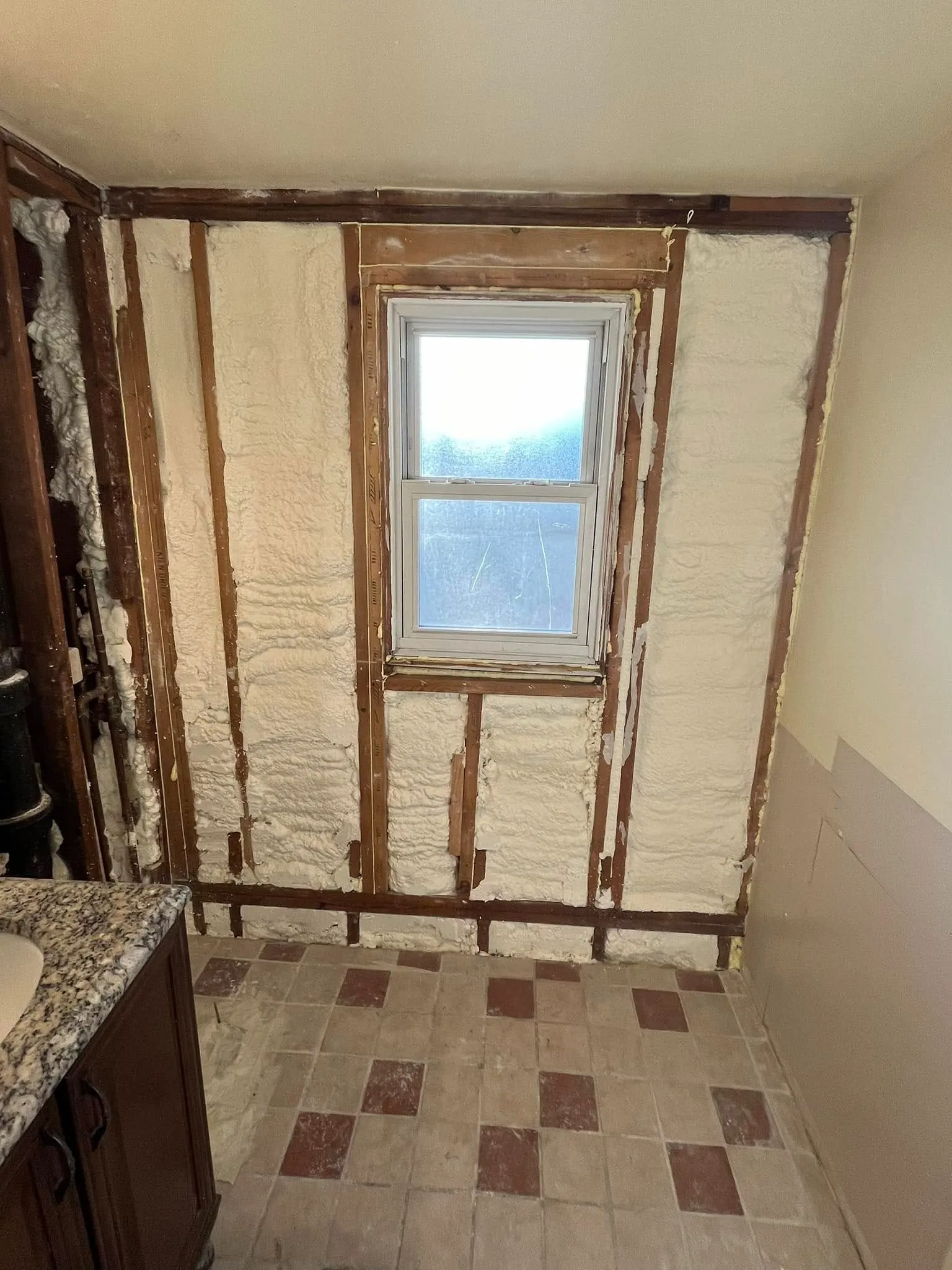
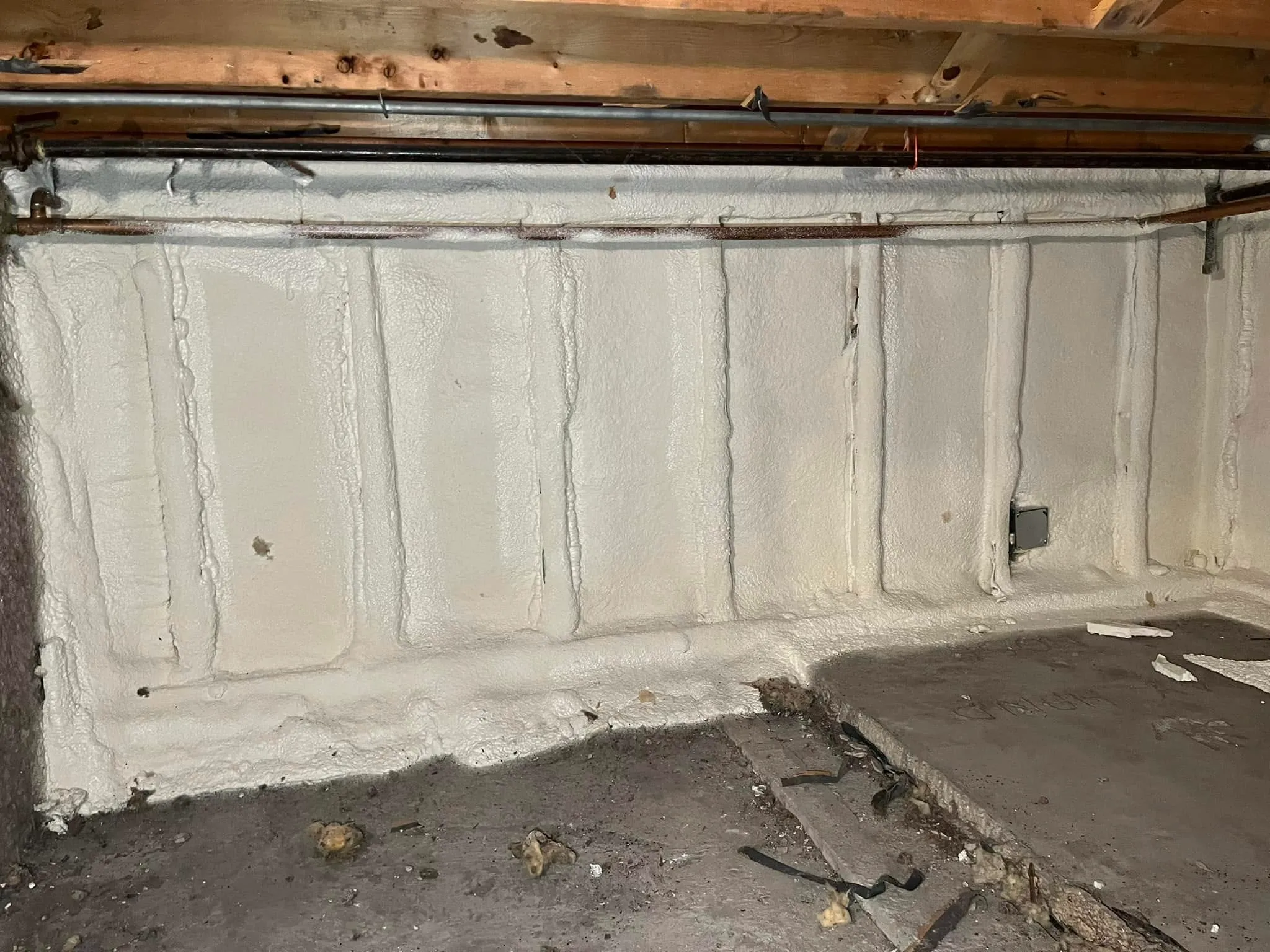
For homeowners in Oak Park, the ideal time to install spray foam insulation is during the fall and spring. These seasons typically provide the moderate temperature range, ideally between 50°F and 80°F, that is best for the chemical reaction required for the foam to cure correctly. This optimal curing process ensures the insulation expands fully, adheres properly to surfaces, and achieves its maximum R-value, creating a durable and effective air seal.
While fall and spring represent the prime installation windows, a project isn’t strictly limited to these months. With the right equipment and an experienced crew, spray foam can be installed year-round. This article breaks down the seasonal factors, technical requirements, and other considerations to help you determine the right time for your insulation project. This information is based on extensive field experience managing installations in the variable climate of the greater Chicago area.
Spray foam insulation is created by a chemical reaction between two liquid components. For this reaction to happen correctly, the temperature of the air, the surfaces being sprayed (the substrate), and the chemicals themselves must be within a specific range. The U.S. Environmental Protection Agency emphasizes that installers must follow the manufacturer’s specific instructions on temperature and humidity to ensure a safe and effective installation.
When it’s too cold, the chemicals can become thick, making them difficult to mix and apply evenly. This can result in a foam that doesn’t expand as much as it should, leading to a lower density and a reduced insulating value. According to the Spray Polyurethane Foam Alliance, applying foam to a substrate that is too cold can compromise adhesion, meaning the foam might not stick properly to the surface.
On the other hand, extreme heat and high humidity can cause problems too. If the chemicals are too warm, the reaction can happen too quickly. This can cause the foam to cure improperly, sometimes leading to shrinkage or cracks away from the studs. High humidity can also interfere with the curing process, potentially affecting the foam’s structure and performance. A professional crew mitigates these issues by using climate-controlled equipment to keep the materials at their ideal temperature regardless of the weather outside.
Oak Park’s climate, with its cold winters and hot, humid summers, presents unique conditions for any home improvement project. To help you plan, here is a detailed look at how each season affects a spray foam installation.
Spring is one of the best times for an installation. The mild weather means that neither extreme cold nor extreme heat is likely to interfere with the application. The lower humidity levels are also favorable for a smooth curing process.
Summer installations are very common but require a higher level of professional attention. The main challenges are high temperatures and humidity. An experienced team will monitor conditions closely and may need to run dehumidifiers or air conditioning in the work area to create a controlled environment. The foam formulation itself may also be adjusted for better performance in warm weather.
Like spring, fall offers an excellent window for spray foam projects. The cool, dry air provides near-perfect conditions for the material to set and cure. Many homeowners choose this season to prepare their homes for the coming winter, aiming to improve comfort and reduce heating bills. Properly installed insulation can make a big difference, as heating and cooling account for about 55% of the energy use in a typical U.S. home, according to the U.S. Energy Information Administration.
Installing spray foam in the winter is absolutely possible but is the most technically demanding season. The primary concern is ensuring the substrate (the wood or sheathing being sprayed) is not frozen and is warm enough for the foam to adhere. Professional installers use powerful heaters to warm the work area and the surfaces before application. They also use heated hoses to keep the chemical components at the right temperature from the truck to the spray gun.
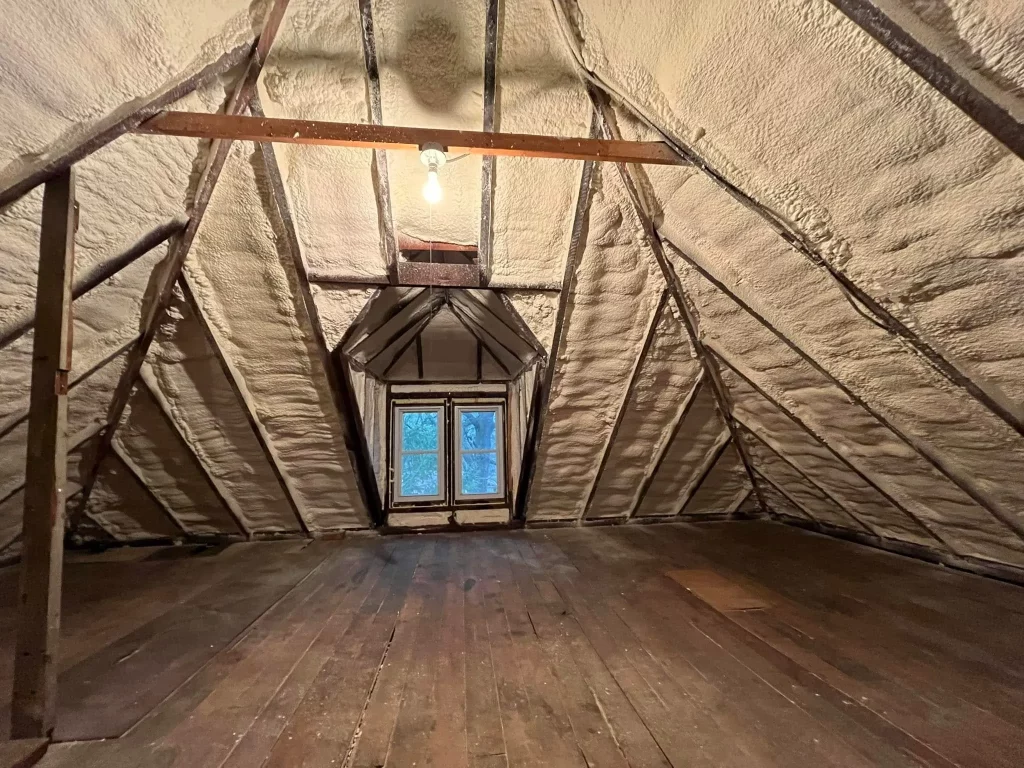
This table summarizes the key factors for installing spray foam throughout the year in Oak Park.
| Season | Temperature & Humidity | Potential Challenges | Contractor Availability |
|---|---|---|---|
| Spring | Mild temperatures, moderate humidity | Minimal weather-related issues | Generally good availability |
| Summer | High heat, high humidity | Foam can cure too quickly; requires climate control | High demand for projects |
| Fall | Mild to cool temperatures, lower humidity | Excellent conditions, but a busy season | Can be difficult to schedule |
| Winter | Cold temperatures, low humidity | Requires heating of substrate and materials | Availability may be better |
Beyond the time of year, several other factors will influence your spray foam insulation project.
Is the project a retrofit in an existing home or part of a new construction build? In a new build, the open walls make for a straightforward application. In a retrofit, the crew will need clear access to the areas being insulated, like attics, crawl spaces, or wall cavities. Any existing moisture issues or leaks must be completely resolved before spray foam is installed, as it creates an air and vapor barrier that can trap existing water.
If you’re dealing with major comfort issues, high energy bills, or pest problems, you may not want to wait months for the “ideal” season. The immediate benefits of spray foam insulation often outweigh the minor complexities of installing it during summer or winter, especially when you hire a contractor who is equipped for the job.
The single most important factor is the skill of the installation crew. An experienced contractor will have the right equipment to handle any season. Ask potential installers about their process for cold-weather or hot-weather applications. Do they have heaters for winter jobs? Do they monitor humidity levels in the summer? Their answers will tell you a lot about their professionalism.
While spring and fall offer the most straightforward conditions for installing spray foam insulation, a project can be completed successfully any time of year. The most important decision is not when to install it, but who installs it. A qualified, experienced contractor will have the knowledge and equipment to manage the unique climate challenges of Oak Park, ensuring you get a high-performance result no matter what the calendar says.
The best way to plan your insulation project is to have an expert evaluate your property. A detailed assessment can identify specific needs and determine the right approach for your home. For a professional consultation, you can contact South Chicago Insulation by calling (779) 803-8025 or sending an email to [email protected] to discuss your project. An experienced team can provide guidance tailored to your home’s unique structure and your long-term efficiency goals.
Yes, very high humidity can interfere with the curing process. Professionals use dehumidifiers and ventilation to manage moisture levels in the work area, ensuring a successful application.
Both open-cell and closed-cell foams have specific temperature requirements. While closed-cell foam is generally a bit more tolerant of a wider temperature range, the application quality for both types depends heavily on the installer’s ability to control the environment and their equipment.
For interior applications, the air temperature in the work area should generally be maintained above 50°F for at least 24 hours before and during the installation to ensure the surfaces are properly conditioned.
A professional installation should only have a noticeable odor for 24 to 48 hours. Proper ventilation is key. In colder months when opening windows isn’t practical, installers use high-powered fans and venting tubes to exhaust fumes from the work area, so the season has little effect on the dissipation of the smell.
Yes. A professional crew will bring in temporary heating equipment to warm the attic and the roof deck to the required temperature before they begin spraying. This is a standard part of the process for cold-weather jobs.
Absolutely. Spray foam cannot be applied to a wet surface. Any exterior application must be done on a dry day, and the surface must be completely free of moisture for the foam to adhere correctly.

